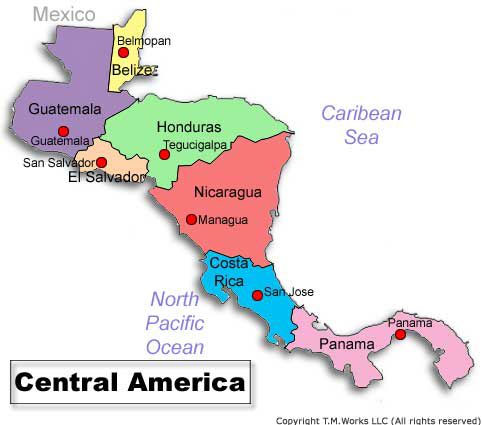|

It would not be far-fetched to think that the seven relatively small countries that compose Central America would be a negligible part of world history. The history and identity of Central America has been virtually invisible and marginalized within U.S. political discourse, but yet the countries of Central America have been a cornerstone of its foreign policy.
There is a marked difference of the interventions in Central America before and after World War II. After World War II, the United States emerged as the world’s main superpower. The U.S. began to intervene in many countries throughout the world trying to stop the spread of communism in the Cold War which had a disparate impact on Central America. The U.S. was in the process of becoming an imperial power following the defeat of Spain in the Spanish-American War in 1898 with the signing of the Treaty of Guadeloupe. The principal method in which the U.S. had been intervening in countries throughout the world was through the Central Intelligence Agency (CIA). The CIA was created in 1947(1), two years after the end of World War II.
The United States’ interventions in Central America have ranged from creating and arming right-wing death squads to propping up some of history's most bloody dictatorships. The United States has over and over again put its ideals before the lives and well-being of the various peoples living throughout Central America, and because of that, much of the history of Central America has been that of violence, civil wars, and revolts.Purpose
This website focuses on the significant excursions of the U.S. in each country and compares the marked difference in the interventions before and after World War II. It chronicles the different tactics that the U.S. has employed in countries like Nicaragua, Guatemala, and El Salvador to maintain control in order to, nonetheless, achieve a similar agenda. This web project gives this too often over-looked subject and area of the world the exposure that has been lacking in the discourse of Latin American history.